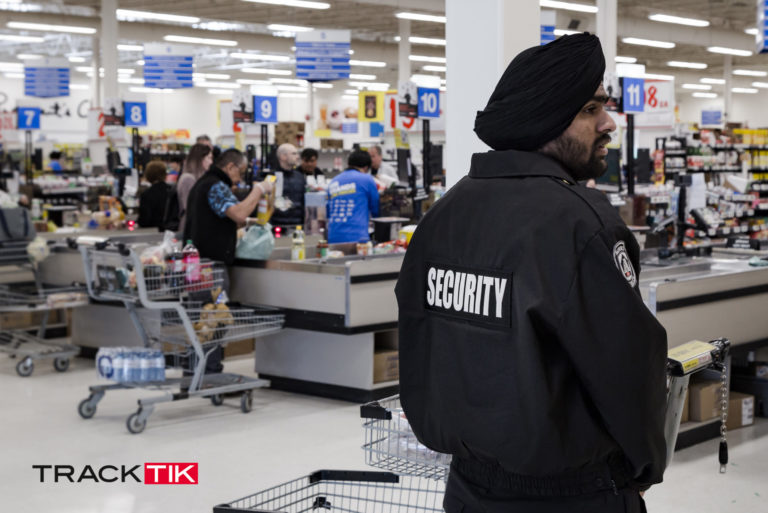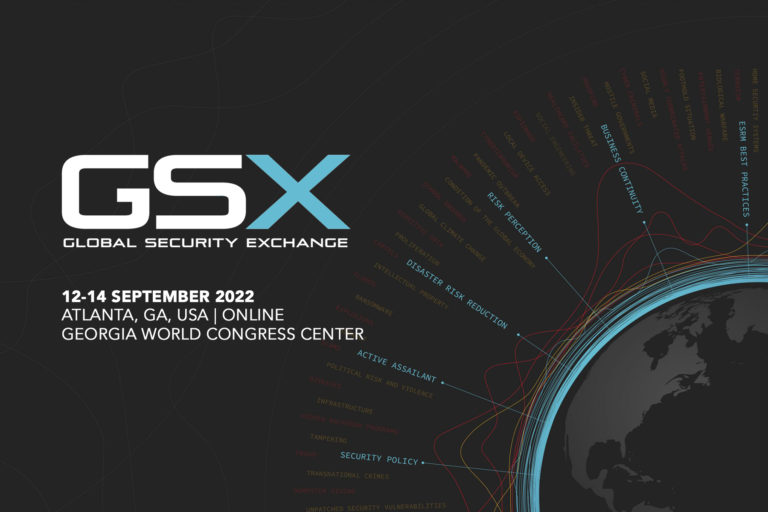In part three of our virtual “Security Q & A in the Time of Pandemic” Series, we spoke with Saurabh Bajaj, CEO of Swiftlane–a San Francisco-based company providing touchless, secure access for buildings and workplaces–and a few members of his team.
TrackTik: Can you give us the elevator pitch? What does Swiftlane do?
Swiftlane: At Swiftlane, we simplify the experience of access control with a seamless, trusted, and reliable physical identity solution so that security is almost invisible. If you are authenticated, you can simply walk up to the door and the door is unlocked for you. You don’t have to worry about fumbling with your bag, you don’t have to think about if you have a coffee in one hand and a laptop in another, you can just keep walking forward. Obviously, the pandemic isn’t something we anticipated, but it has just increased the need for this technology in office and commercial buildings. Hopefully, we can provide valuable help by eliminating some common surfaces, such as door handles and keycard readers, to allow people to return to the workplace in a safe manner.

TrackTik: What kinds of changes can we expect to see as a result of COVID-19 when we return to work?
Swiftlane: Huge changes in terms of the workplace. Workplace managers, executives, facilities managers, human resources, and security teams will be looking for information on how to return to the workplace environment because it’s not going to be the same. The first issue is that some people may not be willing to go back to work. Perhaps out of fear of getting sick, but also the fact that maybe they can avoid a 3-hour commute because they’ve proven that they can work effectively from home. If they can reduce costs and improve their quality of life, what’s the argument for asking them to come back to work? The second issue is fear and anxiety, and increased worry at being in a workplace with so many people after being isolated for so long. This will be a huge factor in everyday activity, the way you access the office, what your public transit experience looks like. How do you get to work? How do you enter the building? How do you interact with people? What does your workspace, event space, meeting space look like?
When people do start to come back to the office, HR teams will try to ease the transition by communicating what will happen when employees return. They will be talking to staff, asking how the company can make them feel more comfortable. Maybe they will try to make everything as touchless as possible, designate zones where only one person can be in at a time, or rotate shifts so there won’t be that many people in the building at any one time.
TrackTik: Do you think we will see increased demand for security?
Swiftlane: I think that we will see security shift to safety, hygiene, and take on a more human type of role. So guards won’t appear as so much of an authority figure, but more a facilitator in how they can make the process better or more comfortable for employees. Of course, we’re always going to need people to deter crime and respond to incidents, but I see the guard role becoming more like what you see in art museums, as opposed to law enforcement. More like ambassadors. Regardless of potentially-changing roles, it’s important that security teams always have the most up-to-date instructions on the specific duties required by the job.
TrackTik: There are a lot of stereotypes in the security guard industry. How does Swiftlane bypass old stereotypes like “everyone has to have a physical access card”?
Swiftlane: I think there’s been a lot of complacency in that people are happy with the status quo. But every single security team and company right now is on high alert, trying to figure out how to navigate this crisis, how to adjust going forward. Everything is being re-evaluated. With keycard systems, there are so many issues for users and well as guests. To simply get a keycard now, employees have to be physically present to get one. People lose them. Keycards require a person at the front desk who is always there, exposed to every employee and guest who comes and goes. The same is true of traditional access control systems, a lot of them are offline only. The systems only work in the office, so how are you going to manage that in a world where there are a lot more staggered shifts, IT teams that are spread out, or mobile security officers that may not be onsite at all times.
TrackTik: Do you think we will see behaviour changes across security, event, space management, and access management?
Swiftlane: What I’m imagining right now is that companies, HR teams in particular, are almost going to need to launch PR campaigns about returning to work. Security will be softer, and all of the corporate company culture and the way people feel connected, united, and together is out the window. When we come back, are we all sitting around a catered lunch with trays of food, all talking and eating? That’s probably not going to happen. Workplaces will look a lot different. What will the company culture be like post-pandemic? We’ll need to worry not just about physical health, but the emotional health of employees which is a huge part of productivity as well. It will be interesting to see how benefits may change going forward. What other benefits might be added by employers to help compensate and increase the safety and security of people. What if some workers won’t return to work without a mask or gloves? This will be a big issue as we return to the workplace.
TrackTik: How do you convince an industry that is, let’s face it, pretty set in their ways to change or adopt new technologies?
Swiftlane: The pandemic is a game changer. The scale has shifted in terms of importance. Convincing someone to move away from a legacy system was a pretty low priority before. Yes, keycards are annoying, but they don’t cost a lot in license fees so employees can deal with it. Post-pandemic, people may decide to work for a company, or return to work for a company, based on solutions–be it enhanced hygiene practices, new office configurations, or access controls–that make them feel secure and safer in their workplaces.
TrackTik: So would you say that the cost of getting it wrong is so much more important than a box of keycards–it’s engagement, turnover, and productivity?
Swiftlane: Pre-pandemic, access control was like insurance–insurance if you have an incident like a break-in or a theft. But this situation isn’t insurance. Access control has become an important viable solution for returning to our day-to-day lives, not a one-off experience that may or may not happen.
We hope you enjoyed the third in our “Security Q & A in the Time of Pandemic” Series. We continue to stand in awe of all of our front line security workers during this crisis. If you have a positive story about front line security officers doing their jobs, please share it on social media using #frontline security.
Do you want to know how the security industry is reacting to Covid-19? Fill out this 5 minute survey and we’ll share the insights with you!
Stay safe, stay healthy, stay secure.



